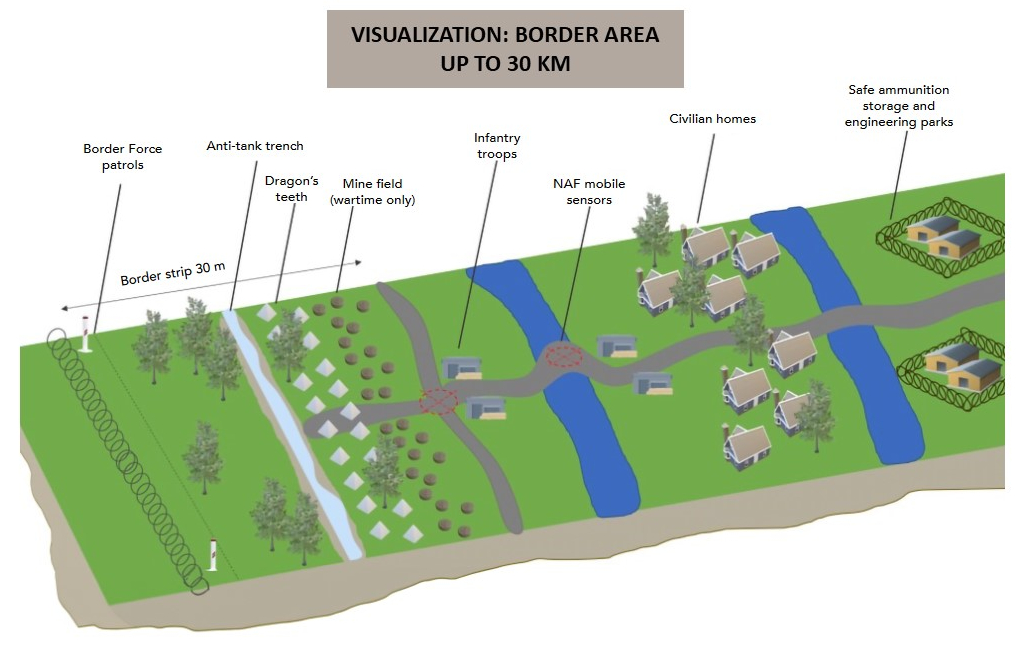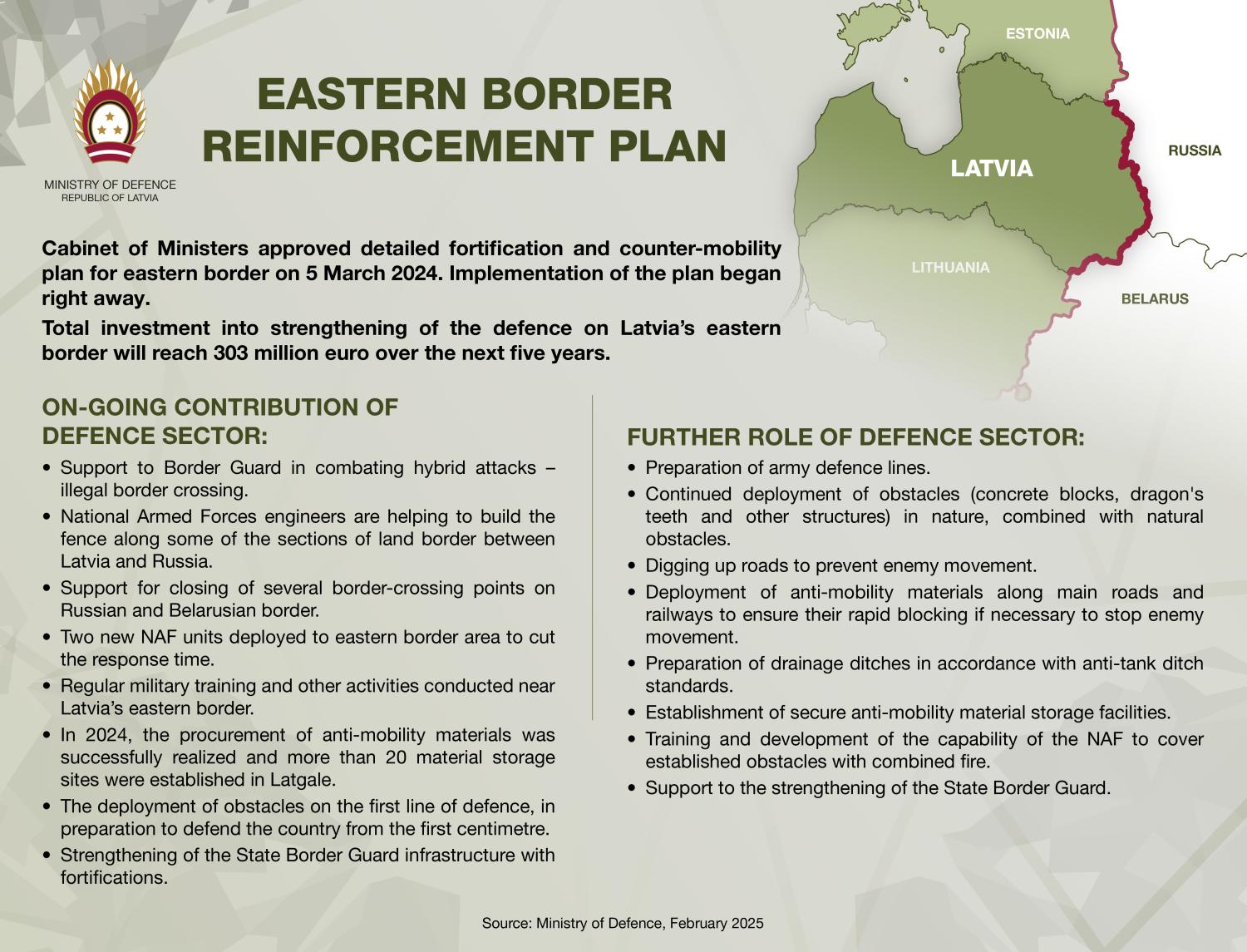Border Fortification

In January 2024, Latvian, Lithuanian and Estonian defence ministers approved the Baltic Defence Line initiative. It will strengthen the defence of eastern border of the Baltic countries and NATO. Closely coordinated construction of the Defence line will be separately funded by each participating country. Baltic Defence Line will significantly enhance military defence infrastructure and capabilities of Baltic countries, preventing Russia from any potential swift military attacks. This initiative is in line with NATO’s defence plans.
On 5 March 2024, Cabinet of Ministers approved border fortification and counter-mobility plan for eastern border. Eastern Border Fortification and Counter-mobility Plan is part of the Baltic Defence Line initiative, which covers the whole length of border with Russia and Belarus. National Armed Forces intend to create defence force support outposts – defence posts with reinforced structures and fortification for troops with various obstacle lines, anti-tank trenches, ammunition and mine storages.
According to defence plans, reinforcement of eastern border has restarted in March 2024, and total investment into strengthening of the defence on eastern border will reach 303 million euro over the next five years.
To prevent enemy movement, Latvia is reconstructing the existing roads to make border more secure by adding anti-tank trenches.
Obstacle lines of different types will be installed. For example, anti-tank trenches will be reinforced with concrete blocks and structures, such as the so-called dragon’s teeth and anti-tank mines. Obstacle lines will be adjusted to the terrain, making full use of natural obstacles such as swamps, forest patches and other natural obstructions.
Border area will also be equipped with specially designated and safe storages for explosives, mines and engineering equipment that can be quickly dispatched to reinforce defence line. Latvia will also develop plans detailing how to prepare for immediate and effective closing of main transport routes, such as roads, railway lines and bridges, to prevent enemy from advancing.
As part of the continued reinforcement of the eastern border, the delivery of anti-mobility material to temporary sites has been done, from where it is further deployed in the field.
In 2024, during the NAMEJS training, the NAF, in cooperation with the State Border Guard, began deploying the purchased anti-mobility materials in the field, primarily for road blocking, as well as for strengthening the infrastructure of border control points and border guard units with fortifications. In 2025, the deployment of material and technical resources will continue.
On January 14, 2025, the Cabinet of Ministers approved an action plan for economic growth and security enhancement in Latvia's eastern border region for 2025–2027, which also provides for significant investment in the defense sector. As part of the plan to strengthen the eastern border, border infrastructure will be developed creating 25 anti-mobility material parks, which will not only increase the capacity for deploying material and technical resources and combat equipment, but will also provide more than 100 jobs for local residents. The military bases of the National Armed Forces will also be upgraded.
The Ministry of Defence thanks the local authorities and appreciates their support in coordinating the sites.
The Ministry of Defence invites local companies to keep an eye on the Ministry of Defence website, where all forthcoming anti-mobility activities will be updated, including technical specifications for anti-mobility materials and the announcement of uponcoming procurements.


